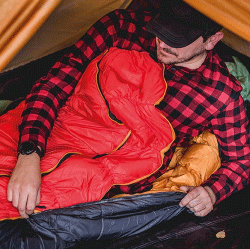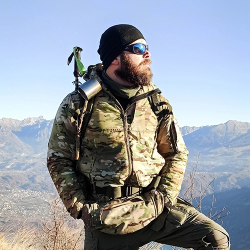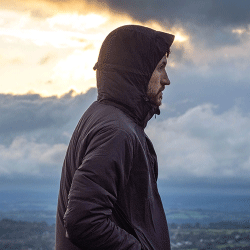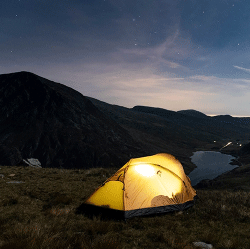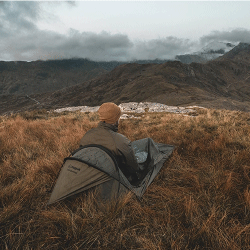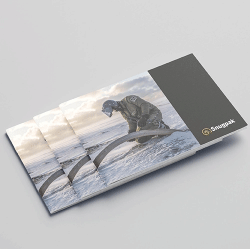

Modern Essentials For Global Travel
With Christmas behind us and Easter only weeks away, travellers of the world are looking at their next venture or travel holiday for 2016. Whether it is a winter escape to warmer, tropical climates, a sight-seeing urban journey into colder cities of the Arctic Circle, or even just a weekend break to a popular tourist destination, one question that can spark popular debate is: What are the modern essentials for global travel?

Essentials Items are those that you need close to hand, all the time. In an absolute emergency, can you walk away from your venture and get on a plane to come home, leaving everything else behind you?
Whether you are hiking across unknown terrain and need the robustness of the ResponsePak, or walking around a favourite city and want the security of the Passport Delux, for the majority of travellers, keeping essential items close to hand is second nature; the Utility Pak is a happy medium between the two, offering adequate space for essential documents, as well as a bottle of water and other essentials. Whatever your needs, Snugpak has a range of luggage items for the explorer, venturer or tourist, travelling thousands of miles away, or even staying close to home.
The Modern 10 Global Travel Essentials:
Mountaineers Books (2010) Mountaineering: Freedom of the Hills 8th Ed. 2. Essential Equipment p.34
Each individual will have different thoughts on a range of equipment, and whether you choose to pack items based on the classic ten essentials, or a systems approach. Using this approach to items and equipment, can the same system be used for urban exploration? Or low-level walks in European Countries? At what point does a venture holiday become an expedition? These are all subjective questions, and regardless of itinerary, there are a lot of ‘essentials’ that an individual will need close to hand, and we have outlined them below:

You should always be mindful and respectful of laws, regulations and customs for carrying items [publicly] depending on the country destination. For most hill walking ventures in the UK, a small pen-knife is desirable; you never know when you will need to remove a stone from a horse’s hoof, or at the very least, use the small tweezers to remove a splinter; but check to see if this is legal; some countries outside the EU have strict laws relating to knifes and weapons and no one wants to fall foul of a foreign legal system.
Your Passport, and associated Visa and Travel Tickets should be secured safely. Although there is an option in most hotels, to place such documents in a room safe, or in some countries, you may be required to surrender your passport during the duration of your stay at a hotel, always ensure that you have relevant details safely secured; you can easily take a photograph of your passport, and store it within various applications of your smartphone. If you lose or need to replace your passport overseas, then the local Embassy can facilitate this, often for a fee, but they will need to know the passport number that is being replaced so that they can verify who you are.
Divide travel money between small local currency, for small purchases such as drinks and food, as well as having extra available cash in the form of travellers cheques. Check with your bank or credit card company to see if there are additional charges for using your card abroad, and what degree of fraud or theft protection you have. Make sure you have a record of the overseas emergency number, in case you have to cancel your card in an emergency.
One essential item that is often overlooked or forgotten is the Foreign Commonwealth Office Emergency Contact Details for the local British Embassy or Consulate Office. This, in the event of a catastrophic emergency, can be a lifeline to various support services, including lost passports etc. A full list of the British Embassies overseas can be found on the following link: https://www.gov.uk/government/world/organisations
A valid European Health Insurance Card (EHIC) gives card holders the right to access state-provided healthcare on temporary stays in other European Economic Area (EEA) countries or Switzerland. Treatment should be provided on the same basis as it would be to a resident of that country and is provided either at reduced cost or, in many cases, for free. The EHIC covers treatment that is medically necessary until the card holder returns home. This includes treatment for pre-existing medical conditions. The EHIC is not an alternative to travel insurance. It is important to have both an EHIC and a valid private travel insurance policy in place before you travel.
(Smart) Phones can be life-saving, even without a cellular signal. Check to make sure what data charges, roaming, you may face if using 4G or other data services instead of a wifi connection. Make sure you carry an additional spare battery, as well as the charging cable and keep expensive products out of public view, unless absolutely necessary. Learn how to use the phone and its applications before you depart, storing relevant information and documents in the Cloud, as well as offline storage, for items such as tickets. And if travelling in groups, or as a family, ensure that more than one person has all the information. Make sure you know which numbers to call in an emergency, such as for Police or Ambulance, as many countries have differing numbers. In the EU, the International Emergency Number is 112.
The ‘Swiss’ Army Knife is an essential expedition item; the modern travel equivalent is the Smartphone & it’s Apps.
Nothing says tourist more than you standing still on a busy pavement holding a tourist map! Other travel books may have valuable information, but make sure they are up to date. In the UK, we are blessed with Ordnance Survey for many different types of maps, but other countries may have limited topographic map availability; which can be a problem if travelling outside of established tourist areas. Consider the benefits of both and make sure you navigate safely around your chosen destination. Remember the elements of natural navigation and finding North, or even consider using offline maps on your phone, such as those available on various mapping applications.
Although your phone may have a hi-definition camera, consider a smaller digital camera, with several models providing quality images for less than £100. If you are using your phone for taking pictures, consider the drain on battery life, and the chances of your phone still having a charge when you need it in an emergency. Memory cards and other accessories can be cheap to compliment the documentation of your venture; but remember, when you are travelling the world, take the time to look at your surroundings with your eyes – too many people spend all day every day, looking through their camera viewfinder or the back of the phone: Venture travel is an experience!
Make sure you have adequate sun protection, even in cold climates. SPF50, (Sun Protection Factor x 50) can be used to prevent sun burn, especially when venturing around high suns, and fresh snow. The SPF Factor is the burn time calculated by a specific number, i.e. 50; this is more commonly called the UV Index. So if the UV Index in a specific area is 5 minutes, when wearing SPF50, the burn time is then 250 minutes; so you will need to reapply sun protection lotion frequently, depending on the burn time. These can often be found on travel weather websites, and a good global website for a list of UV Index can be found here: http://sunburnmap.com
As well as sun protection, consider a small packable insulation or windproof layer, such as the Snugpak Venture Windtop, as well as the SV3 Softie Vest. These are wearable items, that also pack down to a minimum, and if you are caught out in less than ideal weather, they can provide minimal insulation and protection if you need it.
A minimal first aid kit, see the previous article on ‘Wind Chill & Evaporative Heat Loss & First Aid on the Hills’ for a packing guide, can make minor cuts and grazes bearable. Of course, attending a travel first aid course, as well as understanding the effects of travel will make a huge difference; especially learning generic drug names at the local pharmacy; traveler’s diarrhoea is a common affliction – do you know your Loperamide from your Loratadine?
Lastly, ensure you have some bottled water, for each person, as well as some sweets and snacks; Jelly Babies are a good choice in lieu of melted chocolate. Snacks and food are hard to come by in popular destinations, but always check to make sure the conditions are clean, and if necessary eat snacks and drink water out of sealed packets & bottles.
Where do I pack Everything?
Items do need to be secured safely to the individual, but also be kept out of sight from prying eyes; tourists can be easy pickings for criminals, with foreign (UK) passports in high demand, along with cash and credit cards and expensive smartphones. The measure of keeping essentials out of sight dissuades many, and simple security measures can be easily implemented so that you can spend your time enjoying your venture holiday, instead of worrying about aspects of tourist crime. Most destinations, on the whole, are safe, but if you are venturing further afield, extra precautions may need to be taken. Check your destination on the Foreign Office Travel Advice Website:
There are 225 Countries listed, covering most destinations worldwide, and each country has specific listings relating to current travel advice; safety and security, terrorism (Threats), local laws and customs, Entry Requirements (Visas); Health and Money.
You can also contact the Foreign Commonwealth Office Travel advice Team before you leave for your chosen venture: This email service only offers information and advice for British nationals planning to travel abroad. If you need urgent help because something has happened to a friend or relative abroad, contact the Consular Assistance Team on: 020 7008 1500 (24 hours). If you have a question about this travel advice, you can email: TravelAdvicePublicEnquiries@fco.gov.uk
With space and weight at an all time premium for flying, many flights have a restriction now of less than 20kg per person, packing essential items is critical to optimise space in both hand and hold luggage.
Similar to military personnel deploying overseas, take the time to ensure that you have sufficient clothing and items so that you can enjoy your holiday or venture, and that you haven’t overpacked with unnecessary clutter. This also comes in handy for when you make those necessary purchases overseas and need to bring them back home!
Packing items in freezer bags, and compressing them to remove excess air, will reduce overall size, and you can compartmentalise your suitcase or pack using the Snugpak Pakbox, which come in 1, 2, 4 and 6L sizes.
Don’t forget other items, including a Luxury Wash Bag, to keep your toothbrush and toiletries together, as well as Lightweight Towels that take up minimal space & weight.
Remember: There are numerous restrictions on what items you can place in your carry on, hand and hold luggage when boarding a plane in the UK, regardless of destination. Use the following links to ensure that your travel plans start well, and you dont end up on a venture inside the Security Office of your airport! https://www.gov.uk/hand-luggage-restrictions/overview
Putting It All Together:
Travel packing can be a daunting prospect, with a lot of essentials to carry, as well as all your other clothing items and equipment. As well as the Pakboxes, Drisaks can also keep smelly used clothes separate from clean items, as well as reducing overall pack size, by expelling extra air from items and equipment, as well as keeping them dry.
Suitcases and carry on luggage can seriously eat into your luggage allowance, so consider alternative options, such as a Snugpak Kitmonster Holdall, available in 65L and 120L options, or for the more serious venture, consider the Kitmonster Roller (65L & 120L), or the Snugpak 90L Subdivide.
No matter what your Venture Travel Plans, Snugpak has a range of accessories and equipment to keep your pack weight to a minimum as well as securing essential items.

